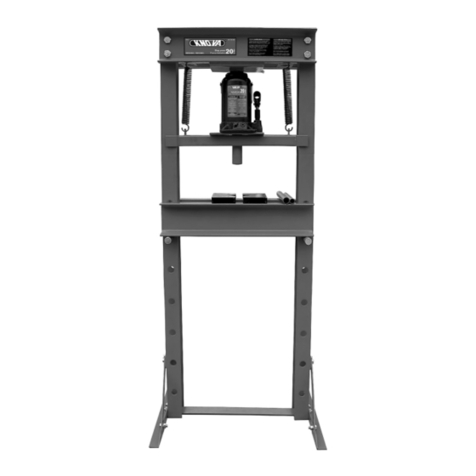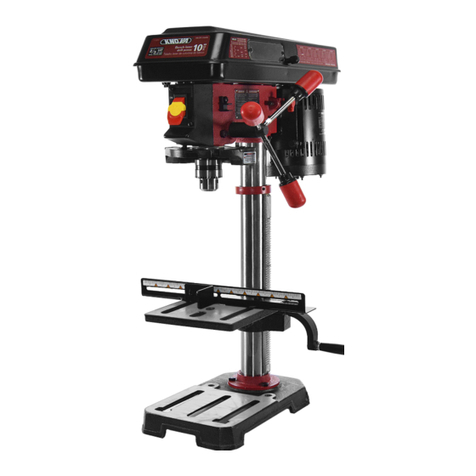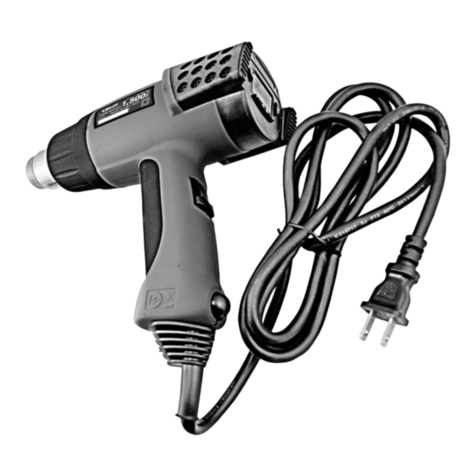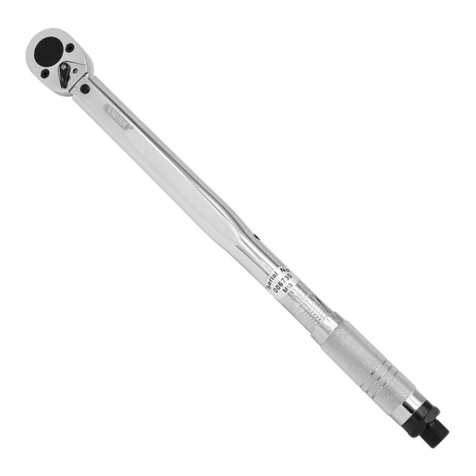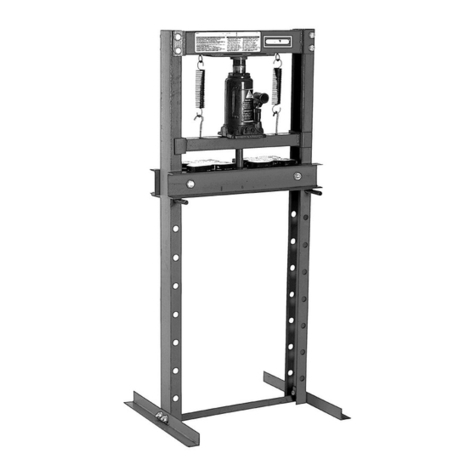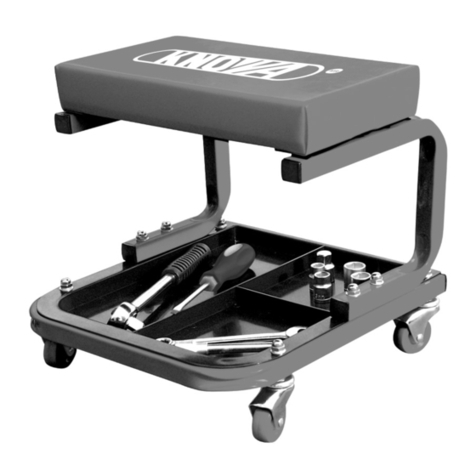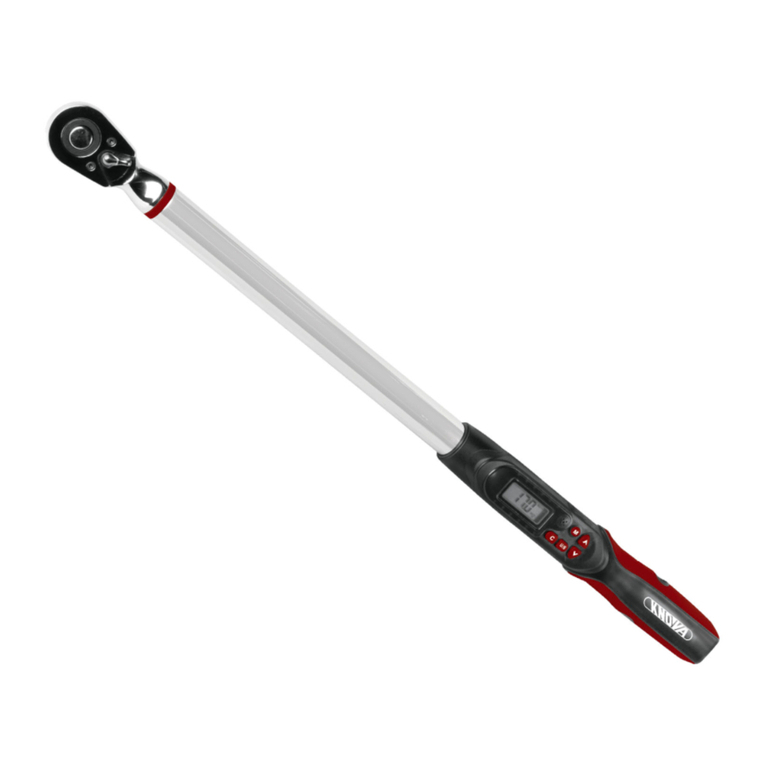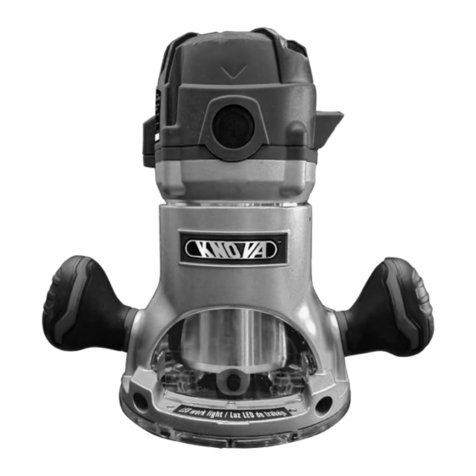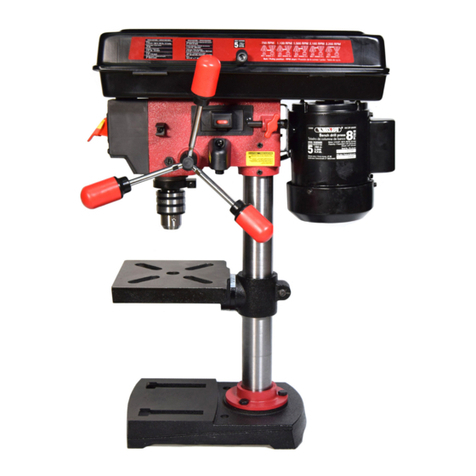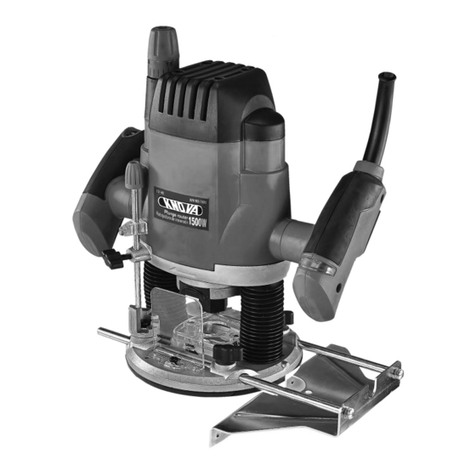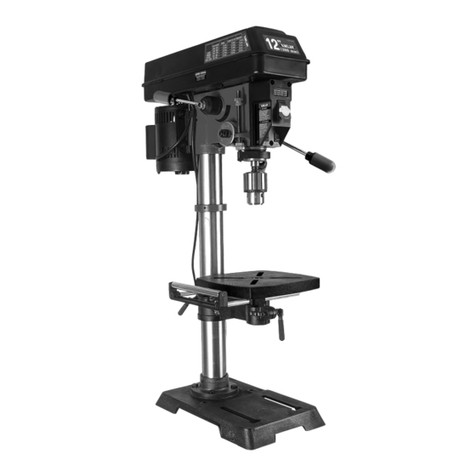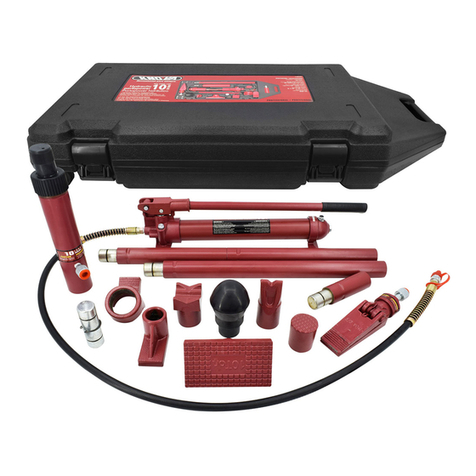
READ ALL INSTRUCTIONS THOROUGHLY
4) USE AND CARE OF THE POWER TOOL
a) Do not force the power tool. Use the correct power
tool for your application. The correct power tool will do
the job better and be safer when used as designed.
b) Do not use the power tool if you cannot use its switch to
turn it on or off. Any power tool that cannot be controlled
by the switch is dangerous and must be repaired.
c) Disconnect the plug from the power source and/or the
battery pack from the power tool before making any
adjustments, changing accessories or storing the tool.
Such safety measures reduce the risk of your power tool
starting up accidentally.
d)
Store idle power tools out of children’s reach and do not allow
those unfamiliar with the tool or with these instructions to operate
it. Power tools are dangerous in the hands of untrained users.
e) Maintain power tools. Check for misalignment or binding
of moving parts, breakage of parts and any other condition
that may affect the power tool’s operation. If damaged,
have the power tool repaired before use. Many accidents
are caused by poorly maintained power tools.
f) Keep cutting tools sharp and clean. Properly maintained
cutting tools with sharp cutting edges are less likely to
bind and are easier to control.
g)
Use the power tool, accessories, tool bits and other
components in accordance with these instructions and in the
intended manner for the particular type of power tool, in view
of the working conditions and the work to be performed. Using
a power tool for operations other than those for which it is
intended could result in a hazardous situation.
5) SERVICE
a) Have the power tool serviced by a qualified repair person
and only use identical replacement parts. Doing so will
ensure that the tool’s safety features are properly maintained.
b) Avoid safety hazards by ensuring that any replacement of
the power tool’s cord is performed by a qualified repair person.
SPECIFIC SAFETY INSTRUCTIONS FOR THE PLUNGE ROUTER
• Hold the power tool by its insulated grips when performing
any operation in which the cutting tool may come into
contact with concealed wiring or its own cord. Contact
with a “live” wire will also make exposed metal parts of the
tool “live” and subject the operator to electric shock.
• Use clamps or another practical means of securing and
supporting the workpiece to a stable platform. Holding the
work by hand or against your body leaves it unstable and
may result in loss of control.
• Keep the handles dry, clean, and free of oil or grease. This
will permit better control of the tool.
• Keep hands away from cutting area. Never place your
hands beneath the workpiece for any reason. Keep the
base of the router in firm contact with the workpiece when
cutting. Grip the router only by its handles. These
precautions will reduce the risk of personal injury.
• Use sharp bits. Dull bits may cause the router to swerve or
stall under pressure.
• Never touch the bit immediately after use. It may be
extremely hot.
WARNING: Read all instructions. Failure to comply
with all of the following instructions may result in elec-
tric shock, fire and/or serious injury.
• Be sure that the motor has completely stopped before you
put the router down. Injury or damage could result from a
head that is still spinning when the tool is laid down.
• Be sure that the router bit is clear of the workpiece before
starting the motor. If the bit is in contact with the workpiece
when the motor starts, the router could jump, resulting in
damage or injury.
• Only use router bits with a shank diameter equal to
the size of the tool’s collet.
• Only use router bits suitable for the tool’s no-load speed.
• This tool is not intended for use with a router table.
Do not employ the tool in an inverted position.
• Do not attempt to employ the tool in an unpowered
or a stationary mode.
• Make sure the collet nut is securely tightened to prevent
the router bit from slipping during use.
WARNING: Some dust created by power sanding,
sawing, grinding, drilling, and other construction activi-
ties contains chemicals known to cause cancer, birth
defects or other reproductive problems. Examples of
such chemicals include:
• Lead from lead-based paints.
f) Dress properly. Do not wear loose clothing or jewellery.
Keep hair, clothing and gloves away from moving parts.
Loose clothes, jewellery or long hair can get caught in
moving parts. The air vents that often cover moving parts
should also be avoided.
g) Make sure that any devices to be used in conjunction with
dust extraction and collection facilities are connected and
properly employed. Use of these devices can reduce
dust-related hazards.
SPECIFIC SAFETY RULES FOR ELECTRIC ROUTERS
• Crystalline silica from bricks, cement and other masonry products.
• Arsenic and chromium from chemically-treated lumber (CCA).
Your risk from such exposure varies, depending on how often you do
such work. Reduce your exposure to these chemicals by working in a
well-ventilated area and working with approved safety equipment, such
as dust masks specifically designed to filter out microscopic particles.
• Avoid prolonged contact with dust from
power sanding, sawing, grinding, drilling,
and other construction activities. Wear
protective clothing and wash exposed areas
with soap and water. Allowing dust to get
into your mouth, eyes or remain on your skin
may promote absorption of harmful
chemicals.
